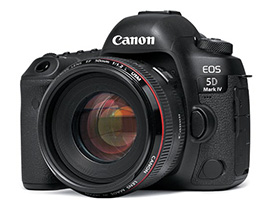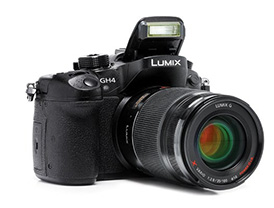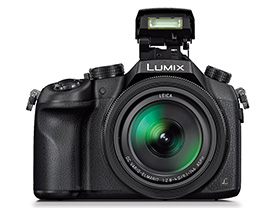

A query on Inverse
Square Law I have a question about point source of light, like an elctronic flash. It is said that when the distance between the flash and the subject doubles, the light reduces by two f/stops. My question is: the sun is also a point source of light, then why does the light stay the same whether we measure it at 50 feet or 100 feet away?
C. M. Bhanushali, via email
The statement you made comes from what is known as the Inverse Square Law. It states: “For a point source of light, doubling the distance between the point source and the subject, the illumination falls to a quarter”. In other words, as you have put it, you need to ‘open up’ two stops to compensate for the loss of light.
The sun is much larger than our earth but since it is so far away, it is considered as a point source of light. Your question in this context is “ why does the light stay the same whether we measure it at 50 feet or 100 feet away?”
The sun is approximately 93 million miles from the earth. So if you were to measure the light 93 million miles from where you are (not practical at all), you will find that the light has reduced by 2 f/stops!
Emergency measure
With the rainy season approaching just about 1.5 months away, I have a question about humidity and fungus. Someone mentioned to me that wrapping lenses in newspaper will prevent the formation of fungus in the lenses. Is this true?
Ramanlal, via email
The right approach is to store lenses/ camera bodies in a humidity controlled cabinet.
Wrapping lenses in newspaper, especially newspaper that has been steam ironed prior to use, does help to some extent; the newspaper absorbs some of the humidity but I wouldn’t rely on this method, unless in an emergency and for a day or two only.
D5300 query
I own a Nikon D5300. 1. It has a function called CLEAN SENSOR. How does it work? I am asking this, because when I tried it, the camera neither did any visible operation, nor did it vibrate. I have opted for CLEAN AFTER EVERY SWITCH ON. Is it correct?
2] How can I adjust the back focus on this camera?
I am asking these questions because I did not receive any printed user’s manual with the camera and the CD which they provided, is bit confusing.
Dhananjay Ingle, via email
1. There is a thin glass in front of the sensor assembly which vibrates at a very high frequency, thus dislodging any dust that may settle on it. The dust is collected on a sticky pad placed just below the sensor assembly. You will neither see any visible operation, nor feel the camera vibrate!
Opting for ‘Clean after every switch on’ ensures that you have a clean sensor before you take a shot. This is fine.
2. Did you mean ‘Back Focus’ or ‘Back Button Autofocus’? If it is ‘Back Focus’ (meaning that the camera autofocus slightly behind the point you want to focus on), then you will have to send the camera to Nikon for recalibration; it does not offer AF correction like some advanced models offer.
If you meant ‘Back Button Autofocus’, you have to assign that function to the AE/AF Lock button on your D5300. In the Custom Setting menu, go to f2 (Assign AE-L/AF-L button) and opt for AF-ON. Now when you press this button, the lens will autofocus. The shutter release button will no longer autofocus the lens.

MFT or D-SLR?
I am planning a trip to Masai Mara. Considering the weight restrictions on cabin baggage, would you advice me to take my Micro Four Thirds kit or would you still suggest a D-SLR kit? What about image quality between the two mentioned kits?
Anthony D’mello (telephonic enquiry)
The weight restrictions for cabin baggage has certainly caused great inconvenience to all photographers. I take it that you would be travelling by economy class, in which case you will be limited to around 8 kg of cabin baggage. The airline may allow you to carry a couple of extra kilogram weight on extra payment. A typical D-SLR kit for wildlife may weigh approximately between 8-13 kg while a similar (as similar as possible) kit in Micro Four Thirds may weigh around 5-6 kg. This automatically leaves out most D-SLR kits, unless you carry the most basic body and non-pro lenses.
In case you plan to fly from Kenya to Tanzania, please check before hand the weight restrictions on personal baggage on smaller (for example, 8-seater) aircrafts. I am told that lots of travellers face problems as these smaller aircrafts do not permit any additional weight.
Coming to image quality, if you use pro-grade lenses on recent MFT bodies, and your shooting technique is good, you are unlikely to notice any loss of image quality in good light (for a reasonable print size). In low light situations, the noise level is likely to go up, especially at higher ISO sensitivities. Having said that, you might be pleasently surprised as to how high you could go on the ISO before digital noise causes serious issues with your image quality. So considering the weight issue, it would be MFT for me.
Bird photography with Bridge cameras
I want to get into bird photography but long telephoto lenses for D-SLRs are very expensive as well as very heavy. Can I use a Bridge camera instead? Will my photos be just as good?
C. R. Madan, Delhi
Bridge cameras, also known as Prosumer cameras, offer long focal length zooms at very affordable costs. They are also very light in weight compared to D-SLR kits. You can certainly use Bridge cameras for bird photography. However, there are some things you need to be aware of.
1. Zoom lenses are difficult to design and when you have extremely long zooms, things get even more complicated. Image quality could vary between different focal lengths.
2. Bridge cameras use very small imaging sensors compared to D-SLRs. Due to this, Bridge cameras will have more digital noise and lesser dynamic range.
3. Typically, at the longest focal length, most Bridge cameras offer f/5.6 (or even narrower) aperture. This may be okay for bright light conditions, but as soon as the subject gets into shade, you will be forced to either reduce your shutter speed or increase the ISO; the former can cause camera shake and the later can cause increase in digital noise.
The above mentioned information is not meant to discourage you, but to keep you well informed. I personally know photographers (one of whom we covered recently in Smart Photography) who use a Bridge camera and take excellent photos of nature and wildlife. |SP

